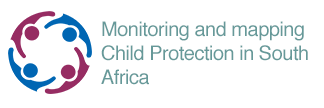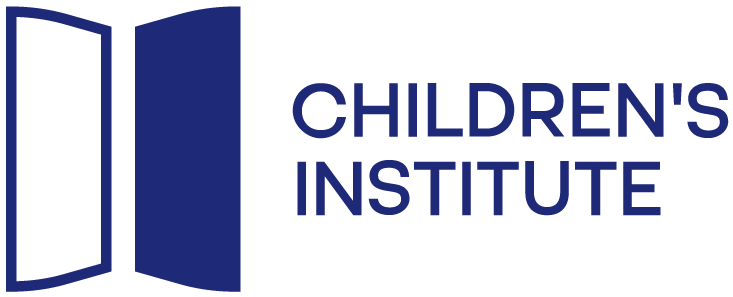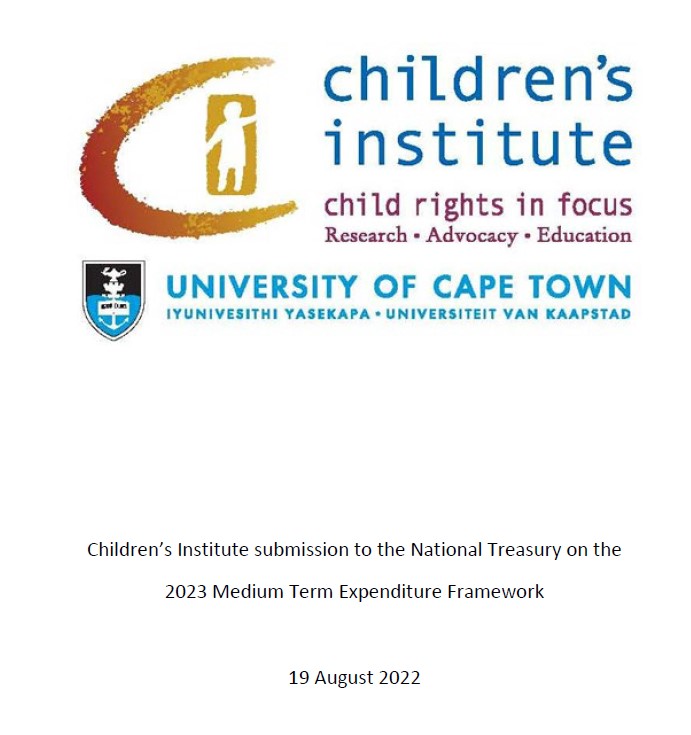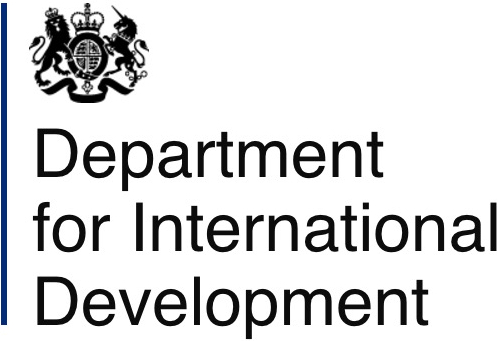This indicator shows how many single orphans (maternal or paternal) are living with the remaining biological parent.
An orphan is defined as a child under the age of 18 years whose mother, father, or both biological parents have died (including those whose living status is reported as unknown, but excluding those whose living status is unspecified). For the purpose of this indicator, single orphans are defined as one of the following:
- A maternal orphan is a child whose mother has died but whose father is alive;
- A paternal orphan is a child whose father has died but whose mother is alive.
Analysis by Katharine Hall & Sumaiyah Hendricks, Children’s Institute, University of Cape Town.
- Children are defined as persons aged 0 – 17 years.
- Population numbers have been rounded off to the nearest thousand.
- Sample surveys are always subject to error, and the proportions simply reflect the mid-point of a possible range. The confidence intervals (CIs) indicate the reliability of the estimate at the 95% level. This means that, if independent samples were repeatedly taken from the same population, we would expect the proportion to lie between upper and lower bounds of the CI 95% of the time. The wider the CI, the more uncertain the proportion. Where CIs overlap for different sub-populations or time periods we cannot be sure that there is a real difference in the proportion, even if the mid-point proportions differ. CIs are represented in the bar graphs by vertical lines at the top of each bar.
Agencies, activists and academics who are concerned about the impact of HIV/AIDS on children repeatedly highlight the additional strains that are placed on kinship and other social networks to care for children who have been orphaned. These concerns are justified, and need to be taken seriously in the planning of responses on the part of both the government and civil society. However, to ensure that responses to both the HIV and COVID-19 pandemic are appropriate, it is also important to bear in mind that the vast majority of children who are counted as orphans according to the standard international definition, have one living parent.[1]
An interesting distinction that is critical for the planning of policies and interventions emerges when we examine parental co-residence of children who have lost only their mother (maternal orphans) or only their father (paternal orphans). The General Household Survey shows that in 2022, 75% of paternal orphans in South Africa were living with their mothers. In contrast, only 37% of maternal orphans were living with their father, but this was up from an even lower 26% in 2018 .
The General Household Survey is of limited use for understanding intra-household relationships as it only captures the relationships of household members to a nominal "head of household". The National Income Dynamics Survey (NIDS) provides more information on relationships of care within the household, with each child being linked to a main caregiver. According to the NIDS Wave 1 data (2008), 67% of paternal orphans had their biological mothers as primary caregivers. Biological fathers were the main caregivers for only 18% of maternal orphans, with this responsibility being taken up more by grandparents (43%) or other family members.[2]
See also:
Hill C, Hosegood, V, & Newel, M-L (2008) Children's care and living arrangements in a high HIV prevalence area in rural South Africa. Vulnerable Children and Youth Studies, 3(1): 65-77.
Hosegood V, Floyd S, Marston M, Hill C, McGrath N, Isingo R, Crampin A, & Zaba B (2007) The effects of high HIV prevalence on orphanhood and living arrangements of children in Malawi, Tanzania, and South Africa.Population Studies, 61(3): 327-336.
Monasch R & Boerma J (2004) Orphanhood and childcare patterns in sub-Saharan Africa: an analysis of national surveys from 40 countries. AIDS, 18 (suppl 2): S55-S65.
Bray R (2003) Predicting the social consequences of orphanhood in Southern Africa. African Journal of AIDS Research, 2(1): 39-55.
Children Count defines a ‘maternal orphan’ as a child whose biological mother is dead or whose living status is unknown but whose father is alive, and a ‘paternal orphan’ as a child whose biological father is dead or whose living status is unknown, but whose mother is alive. Unlike definitions used by UN agencies and the Actuarial Society of South Africa model, these categories are mutually exclusive.
The General Household Survey asks, for each household member, whether their biological mother and father live in the same household. This indicator is therefore calculated by identifying single orphans (children whose mother or father is dead or whose living status is unknown), and by calculating the number and proportion of these children who are resident with their remaining parent.
The definition of orphanhood used here differs from that commonly used by the UN agencies as well as the Actuarial Society of South Africa (ASSA). The definition of maternal and paternal orphan employed by these institutions includes children who are double orphans: for instance, all children who have lost a mother (whether or not their father is alive) are included in their measure of maternal orphans. Using those definitions, maternal, paternal and double orphan numbers add up to more than the total number of orphans.
The GHS uses a Master Sample frame which has been developed as a general-purpose household survey frame that can be used by all other Stats SA household-based surveys that have design requirements that are reasonably compatible with the GHS. The sample is drawn from Census enumeration areas using a stratified two-stage design with probability proportional to size sampling of PSUs in teh first stage, and sampling of dwelling units with systematic sampling in the second stage. The resulting sample consists of just over 20,000 households with around 70,000 individuals, and should be representative of all households in South Africa. It is also designed to be representative at provincial level and within provinces at metro/non-metro levels and three geography types (urban areas, rural areas under traditional authority, and farms).
The sample consists of households and does not cover other collective institutionalised living-quarters such as boarding schools, orphanages, students’ hostels, old-age homes, hospitals, prisons, military barracks and workers’ hostels. These exclusions probably do not have a noticeable impact on the findings in respect of children.
Changes in sample frame and stratification
Since 2014 the GHS has been based on the 2013 master sample that that is, in turn, based on information collected during the 2011 Population Census. The previous master sample for the GHS was used for the first time in 2008, and the one before that in 2004. These again differed from the master sample used in the first two years of the GHS: 2002 and 2003. Thus there have been four different sampling frames during history of the annual GHS, with the changes occurring in 2004, 2008 and 2013. In addition, there have been changes in the method of stratification over the years. These changes could compromise comparability across iterations of the survey to some extent, although it is common practice to use the GHS for longitudinal monitoring and many of the official trend analyses are drawn from this survey.
Weights
Person and household weights are provided by Stats SA and are applied in Children Count analyses to give population estimates on the indicators. The GHS weights are derived from Stats SA’s mid-year population estimates for the relevant year. The population estimates are based on a model that is revised from time to time when it is possible to calibrate the population model to Census data and larger population surveys such as the Community Survey.
In 2017, Stats SA revised its demographic model to produce a new series of mid-year population estimates and the GHS data were re-released with the revised population weights. All the Children Count indicators were re-analysed retrospectively, using the revised weights provided by Stats SA, based on the 2013 model. The estimates are therefore comparable over all years. The revised weights particularly affected estimates for the years 2002 – 2007.
The 2017 model drew on the 2011 census, along with vital registration, antenatal and other administrative data, but was a “smoothed” model that did not mimic the unusual shape of the age distribution found in the census. The results of the 2011 census were initially distrusted because it seemed to over-count children in the 0 – 4 age group and under-count children in the 4 – 14-year group. It is now thought that the fertility rates recorded in the 2011 population census may have been an accurate reflection of demopraphic trends, with an unexplained upswing in fertility around 2009 after which fertility rates declined again gradually. Similar patterns were found in the vital registration data as more births were reported retrospectively to the Department of Home Affairs, and in administrative data from schools, compiled by the Department of Basic Education. In effect, this means that there may be more children in South Africa than appear from the analyses presented in these analyses, where we have applied weights based on a model that it is now known to be inaccurate.
Stats SA has subsequently developed a new population model - the 2022 series, which provides revised mid-year population estimates back to 2002 and projected to 2032. However, the GHS series has not yet been reweighted.The population estimates in Children Count are therefore based on weights derived from outdated population model (2017). It is not yet clear when and how the population model will be revised again following the 2022 Census, as there are concerns around census under-count and plausibility of its findings.
Disaggregation
Statistics South Africa suggests caution when attempting to interpret data generated at low level disaggregation. The population estimates are benchmarked at the national level in terms of age, sex and population group while at provincial level, benchmarking is by population group only. This could mean that estimates derived from any further disaggregation of the provincial data below the population group may not be robust enough.
Reporting error
Error may be present due to the methodology used, i.e. the questionnaire is administered to only one respondent in the household who is expected to provide information about all other members of the household. Not all respondents will have accurate information about all children in the household. In instances where the respondent did not or could not provide an answer, this was recorded as “unspecified” (no response) or “don’t know” (the respondent stated that they didn’t know the answer).The numbers are derived from the General Household Survey, a multi-purpose annual survey conducted by the national statistical agency, Statistics South Africa, to collect information on a range of topics from households in the country’s nine provinces.
For more information on the methods of the General Household Survey, see the metadata for the respective survey years, available on Nesstar or DataFirst






 The SAECR 2024 tracks trends on the status of children under 6.
The SAECR 2024 tracks trends on the status of children under 6. 








